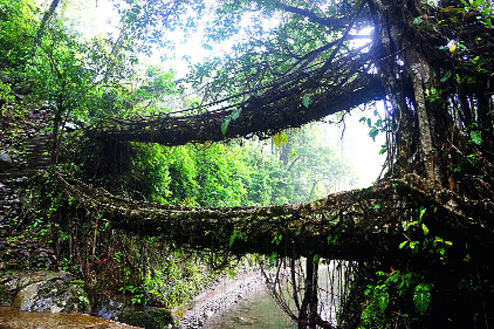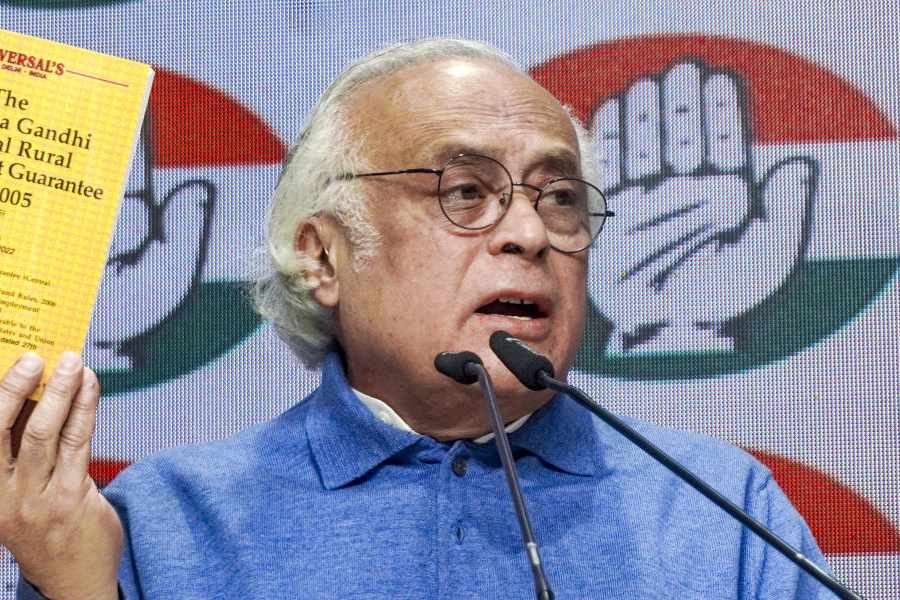
Jorhat, June 16: Buoyed by the popularity of the unique living root bridges among tourists to Cherrapunjee in Meghalaya, the only double-decker root bridge is being given a triple deck.
Some 20 to 30 years hence, visitors to Longriat (meaning gorge) in Cherrapunjee will be able to see the complete triple deck but today one can only see the first of the roots crossing over to the other side.
Bijit Dutta, a visitor from here, on viewing the root and other smaller and thinner ones being drawn across the gorge, could just make out the beginnings of the triple tier.
"I had seen a few single-tier root bridges and wanted to see the double-decker one, which could be seen by trekking about 2,500 feet to the bottom of the valley. The double decker was a treat to see but what excited me more was seeing how the bridge was being made into a triple deck. I could imagine how wonderful it would look when the third deck was completed," he said.
Denis P. Rayen, who was the first to give the nomenclature of living root bridges, while describing the bridges to people visiting the region, said they were wonders and unique in the world.
The roots of the Ficuselastica, a kind of rubber tree, grow from the trunk and can be drawn horizontally and intertwined to form a bridge across small streams and gorges.
"At first when I coined the phrase in 2000, no one believed that the root bridges would attract tourists. But today it can be said apart from the usual Cherrapunjee tourist circuit, people come here just to see the root bridges," he said.
"Three to four years ago, BBC had shown a programme on how root bridges were made and again in February this year it was shown in the documentary series called Human Planet, which was anchored by Frieda Pinto," Rayen, who hails from Tamil Nadu but has settled in Cherrapunjee, said.
There is another double-tier root bridge at Siej, meaning bamboo in Khasi, 3km from the resort but this was damaged in a storm and is being reconstructed.
"Heavy flow of tourists to see the root bridges has resulted in people wanting to repair this bridge and making tiers over the single deck ones as well," Rayen said.
"Most of the visitors are backpackers from abroad. There are domestic tourists as well. The IT sector from Bangalore has started exploring this place recently," he said.
Rayen, who was the first to set up a resort in the area, said he used to earlier work in a bank near Puri in Odisha and was inspired by what tourism could do to a place.
"What is praiseworthy is that the people drawing the roots to the other side with the help of bamboos or other trees may not be there to see the completion of the bridge as it is a slow and painstaking process taking years, about 20 to 30 years. What they are doing is for others to enjoy," Rayen said.











